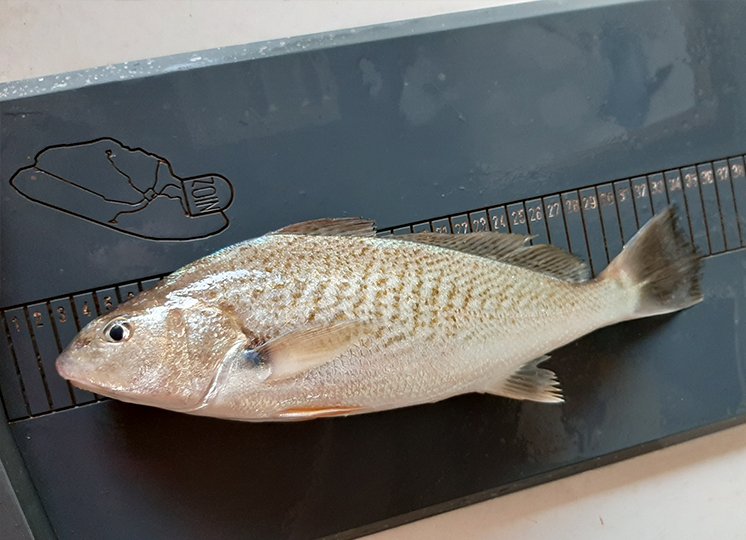Adult Atlantic croakers in the NIOZ fyke

The Atlantic croaker (Micropogonias undulatus) got it’s name because of the strong sound it makes when stressed. This species is native to coastal waters in the western Atlantic Ocean, from Massachusetts to Mexico, and has a broad tolerance for temperature and salinity. It is usually found in bays and estuaries over sandy or muddy bottoms where it feeds on polychaete worms, crustaceans and small fish.
The first time this species was discovered on this side of the Atlantic ocean was near the Belgian coast in 1998. The first time this species was discovered in the Netherlands was in 2001. These first specimens were all juveniles, but since then there are regular sightings of adult Atlantic croakers in Dutch waters.
It is believed this species has been transported to the Eastern Atlantic ocean in the ballastwater of ships, since it is a bottem-dwelling species and the first sightings were all juveniles. It seems this species is now surviving and breeding in Dutch waters, so we would not be surprised if we catch more Atlantic croakers in the future.
The 2 adult Atlantic croakers that have been caught in the NIOZ fyke will be dissected to determine the sex, age, sexual maturity, stomach content, isotope composition and DNA profile.